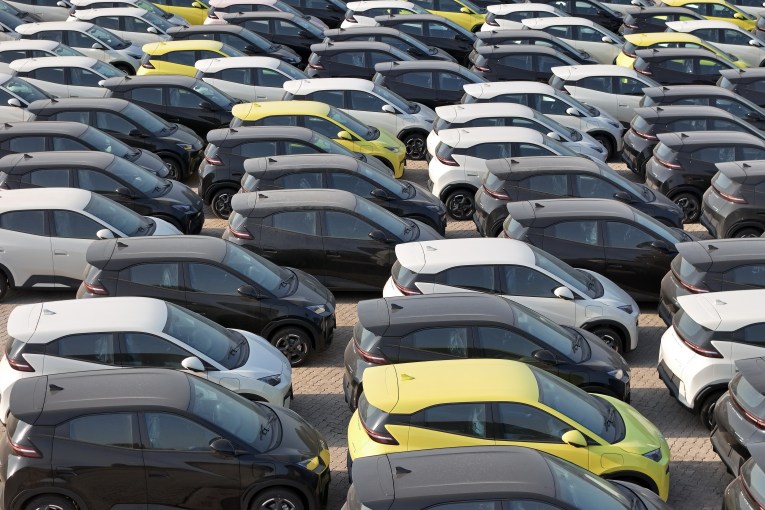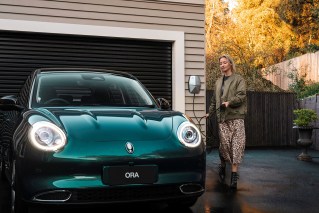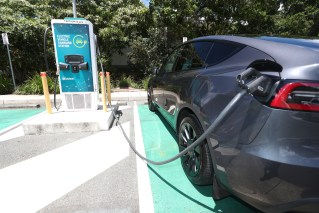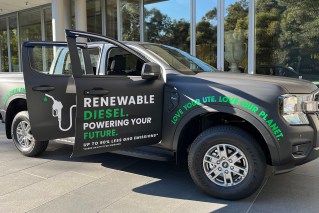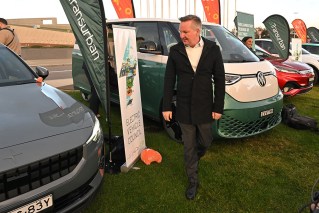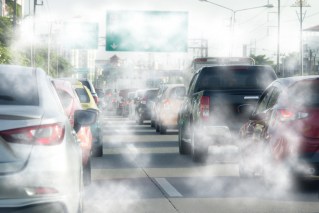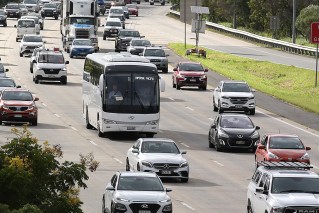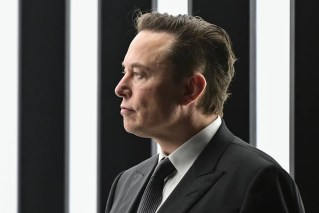‘The most Australian car on-sale today’: The electric battery-powered Nissan Leaf reviewed

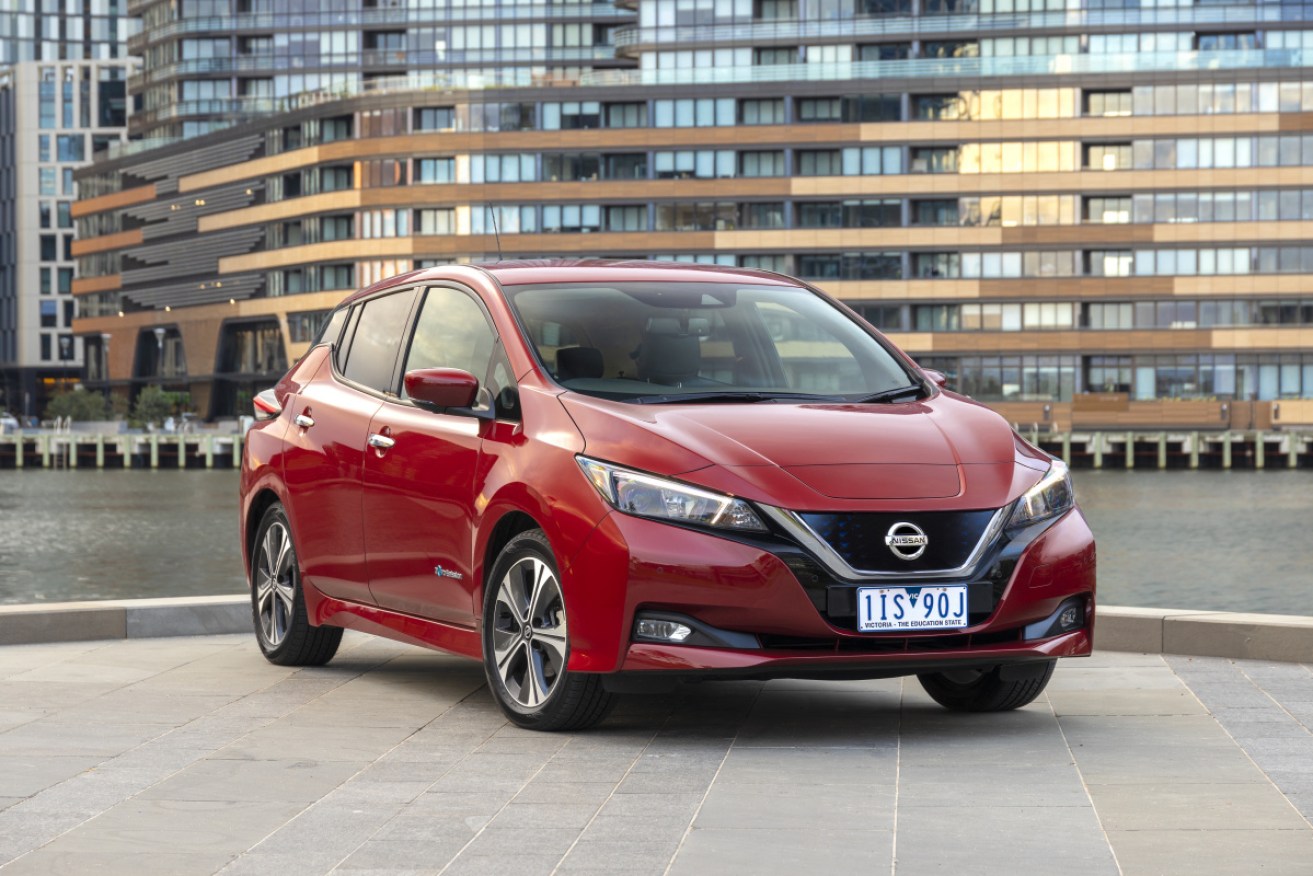
The Nissan Leaf is another addition to Australia's fleet of battery electric vehicles. Photo: Nissan
Around 10 years ago Nissan boss Carlos Ghosn made all sorts of startling sales predictions for the new Leaf electric vehicle.
Nowadays Ghosn’s on bail for allegedly purloining a startling amount of company money for personal use. Meanwhile, the jury’s still out on the Leaf.
In Australia, the first generation barely raised a sales ripple. Second time round Nissan’s hoping for much better.
But there’s no bold sales claims being made, especially by Carlos. He’s got other things on his mind.
What is it?

The Leaf is Nissan’s electric battery-powered five-door hatchback. Photo: Nissan
The Nissan Leaf is a five-door hatchback about the same size as the Toyota Corolla or Mazda3.
What differentiates it from them is its powertrain and its cost, the latter very much a product of the former. More on that below.

A lithium-ion battery pack, not petrol, powers the vehicle. Photo: Nissan
The Leaf is a battery electric vehicle. So instead of an orthodox petrol tank there’s a 40kWh lithium-ion battery pack under the floor. And rather than an internal combustion engine you’ll find an AC synchronous motor under the bonnet.
If some of that terminology has got you a bit mystified, don’t worry, check out our handy guide to all things EV here.

Open up the bonnet and you’ll find AC synchronous motor. Photo: Nissan
Why is it important?
The Leaf is another addition to the slowly expanding Australian BEV segment. We’ve recently had the Hyundai Ioniq and Hyundai Kona electric arrive, while the Tesla Model 3 has just landed.
Watch Bruce Newton’s review of the new Nissan Leaf
How much does the Nissan Leaf cost
Nissan is quoting a $49,990 price for the new Leaf plus on-road costs. That’s low $50,000s by the time you get it on the road, which is about double the cost of a basic petrol-fuelled Corolla.
Why so much? It’s the battery. The positive thing is the price of the packs is coming down as the performance is going up; the first generation Leaf offered 22kWh and charged $51,500 in Australia when it launched.
So roughly double the performance for the same price (appreciably lower if inflation is taken into account), double the range (theoretically), more power and torque and even a reduction in mass.
Against other BEVs the Leaf is more competitive. It’s more expensive but has a longer range than the Ioniq and cheaper with a shorter range than the Kona or Model 3.
Nissan implores us to think of the bigger financial picture. Petrol money is no longer an issue of course. And the Leaf has bidirectional charging capability, which means you could source power from its battery for your home. Well, only in theory, because the technology to do that isn’t on-sale for at least 12 months and will be expensive when it does launch.
What does the Nissan Leaf get?

The Leaf has a heated steering wheel and sat-nav with traffic monitoring. Photo: Nissan
Equipment-wise the Leaf is okay for the money. A family of driver-assist systems are standard including autonomous emergency braking (AEB) with pedestrian detection, an around-view monitor with moving object detection, blind-spot and lane departure warning, rear cross-traffic alert, lane intervention and driver alert and traffic sign recognition.
There’s a 2018-spec five-star ANCAP safety rating, tyre pressure monitoring and a wooh-woohing sort of noise to warn screen-addicted pedestrians it is close by.
The Leaf is the first Nissan to get Apple CarPlay and Android Auto and there’s also single-zone climate control, radar cruise control, leather/suede seat trim, heated seats, a heated steering wheel and sat-nav with traffic monitoring.
The Leaf comes with a five-year warranty and the battery pack gets a separate eight-year warranty. Service intervals are 12 months/20,000km and capped pricing over four years comes out at $1131.
What do we like?

The Leaf features some Melbourne-made parts. Photo: Nissan
Well here’s one interesting little factoid, the Leaf is probably the most Australian car on-sale today.
Yep our cars are built in the UK, but under the skin there are some key components made at a Nissan casting plant in Melbourne. It’s one of the few remnants of Australia’s collapsed automotive manufacturing industry.
Recharge the Leaf with renewably-produced electricity and you can feel happy you’re not emitting smog into the atmosphere.
Other BEV attributes include silent running, punchy acceleration from standstill because of the instant torque of the electric motor and good handling thanks to the heavy battery pack being located in the Leaf’s floor and thus lowering its centre of gravity.
The ride of the Leaf is pretty darn comfortable. It’s heavy by small car standard at 1594kg, but it doesn’t bang and crash unless you hit really big sharp-edged potholes.
You sit a bit higher than normal because of the battery pack, but the Leaf offers a pretty orthodox cabin once you get used to the weird gear selector … thing. There’s only a single-speed reduction gear, so the only way of artificially varying motor response is via the E-Pedal.
Actually a switch, it regenerates electricity via a braking function. Turn it off and the car rolls more feely and depletes the battery sooner.
What we don’t like

Battery depletion is an issue. Photo: Nissan
Depletion of the battery is a real problem. Nissan claims a 270km range based on European real world testing, but our test drive – which covered country road and highway driving as well as freeway running and urban traffic jams – came out at more like 180km.
On that basis this is a commuter car only. It also means Leaf works better as part of a two-car garage, because it isn’t suitable for long distance work and it takes so long to recharge.
From empty to full will takes 24 hours via a standard 10-amp wall socket. That reduces to 7.5 hours combining the 6.6kW onboard AC charger and a 32-amp wallbox. When the Leaf is hooked up to a DC fast-charger it can be recharged from empty to 80 per cent full in as little as 60 minutes … yep, about 58 minutes longer than it takes to refuel your car and pay for it.
It’s a tough hurdle isn’t it?
Other than that the Leaf has a few irritating ergonomic issues. There’s no reach adjust on the steering column, the parking brake is an archaic foot pedal and most of the dashboard surfaces are hard to the touch.
Buy it or not?

The Leaf is vastly better than its predecessor. Photo: Nissan
The Leaf is proof how quickly the battery electric vehicle is evolving. It is vastly better than its predecessor in just about every respect.
Yet, the new generation also remains evidence of how much further BEVs still have to go in terms of both recharging time and pricing.
You can see why Ghosn was so ambitious for the Leaf but also how wildly optimistic he was.
Until its issues are resolved the Leaf will continue to be a fringe player selling to fleets and committed and cashed-up climate change warriors.
